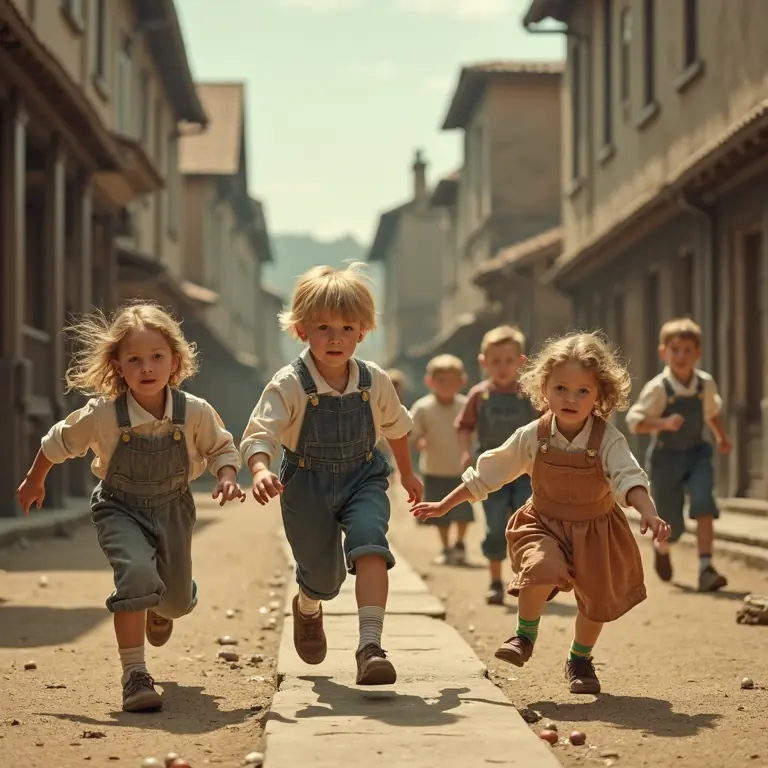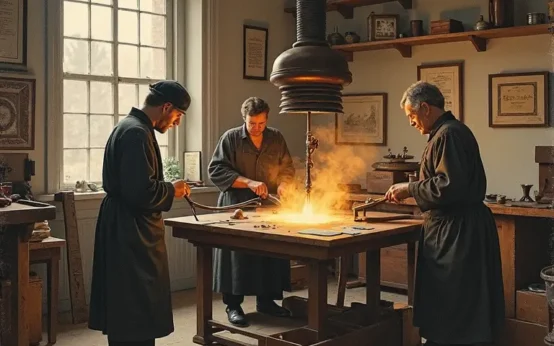The playground: a vibrant, chaotic landscape of swings, slides, and, most importantly, games. From the simple counting rhyme of “One, Two, Buckle My Shoe” to the complex strategies of capture the flag, these games seem like spontaneous expressions of childhood fun. But beneath the surface of laughter and friendly rivalry lies a surprisingly deep history, one that reveals how playground games have served as miniature simulations of adult life, teaching crucial social, physical, and even strategic skills for millennia. This article will delve into the fascinating origins of these games, exploring how they evolved, what they taught, and why they continue to be relevant in today’s world.
Ancient Echoes: Games in Early Civilizations
The roots of many modern playground games can be traced back to ancient civilizations. While not always played by children exclusively, the principles underpinning these early games – competition, rule-following, physical prowess – were fundamental to societal structures. In ancient Greece, games weren’t just entertainment; they were integral to education and religious festivals. Boys were rigorously trained in athletics, preparing them for military service and the Olympic Games, which, though an adult competition, influenced the types of physical challenges deemed valuable. Games involving throwing, wrestling, and running were common, fostering skills like coordination, strength, and strategic thinking.
Similarly, in ancient Rome, games like ludus latrunculorum (a strategy board game often compared to chess) demonstrate a penchant for tactical thinking. Even simpler games, like knucklebones (played with the ankle bones of animals), weren’t merely about chance; they required dexterity and a degree of strategic prediction. The games children played, even informally, often mirrored the adult world, preparing them for their future roles in society. Evidence suggests that children in ancient Egypt also engaged in various forms of games involving balls and running, fostering physical development and social interaction.
Medieval Merriment and the Seeds of Modern Games
The Middle Ages witnessed a continuation of these traditions, though often adapted to reflect the social and religious context. While formal education was limited for most children, play remained a crucial learning experience. Games like “Fox and Geese” – a precursor to modern games like checkers – emerged, emphasizing strategic planning and anticipating an opponent’s moves. The game involved one player (the “fox”) attempting to capture multiple “geese,” highlighting an asymmetrical power dynamic that reflects the feudal system.
This period also saw the rise of folk games, often tied to seasonal festivals and agricultural cycles. These games, passed down through oral tradition, frequently involved physical challenges and cooperative elements. Ring games, where children held hands and moved in a circle while singing, were common, promoting social cohesion and a sense of community. Games involving balls, often made from cloth or leather, were also popular, developing hand-eye coordination and physical stamina. The emergence of early forms of tag and hide-and-seek can also be traced to this era, developing stealth, speed, and spatial awareness.
The Victorian Era: Formalizing Play and Moral Instruction
The Victorian era brought a significant shift in attitudes towards childhood and education. With the rise of industrialization and urbanization, the need for disciplined and obedient workers became paramount. This translated into a more formal approach to children’s play. Educators and social reformers began to see the value of organized games as a means of instilling moral values, teamwork, and physical fitness.
The development of organized sports, like cricket and football, had a direct impact on playground games. Rules became more codified, and emphasis was placed on fair play and sportsmanship. Games like hopscotch, which likely originated as a military training exercise (practicing agility and coordination), gained popularity, often with designated playing areas and standardized rules. The Victorian era also saw the rise of board games and puzzles, stimulating intellectual development and problem-solving skills. Interestingly, the Victorian obsession with order and categorization even extended to the seemingly chaotic world of children’s rhymes and games – a trend explored in the surprisingly complex history of nursery rhymes.
The 20th Century: Innovation, Adaptation, and the Rise of Mass Culture
The 20th century witnessed an explosion of innovation in playground games, fueled by changing social norms, technological advancements, and the growing influence of mass culture. The development of new materials, like rubber and plastic, led to the creation of more durable and versatile play equipment. Games like jump rope, with its rhythmic complexity, became increasingly popular, requiring coordination, timing, and teamwork.
The post-World War II era saw a surge in suburban development and a growing emphasis on leisure activities. This led to the creation of more elaborate playgrounds and a wider range of organized games. Capture the flag, a game that combines strategic planning, physical endurance, and teamwork, became a playground staple, often mirroring military tactics in a simplified form. Red Rover, with its emphasis on physical strength and a willingness to take risks, also gained widespread popularity. The influence of television and popular culture also began to shape playground trends, with games inspired by popular shows and movies.
The Strategic Value of Playground Games: What Are Children Really Learning?
Beyond the simple enjoyment, playground games serve as invaluable learning experiences, fostering a wide range of skills that are essential for success in life. Here’s a breakdown of some key strategic benefits:

- Strategic Thinking: Games like checkers, capture the flag, and even tag require players to anticipate their opponents’ moves, plan ahead, and adapt to changing circumstances. This develops critical thinking skills and the ability to solve problems creatively.
- Social Skills: Playground games necessitate interaction and cooperation. Children learn to negotiate rules, resolve conflicts, and work together towards a common goal. They also learn to handle winning and losing gracefully, building resilience and emotional intelligence.
- Physical Development: Many playground games involve running, jumping, throwing, and climbing, promoting physical fitness, coordination, and gross motor skills.
- Rule Following & Respect for Authority: Games operate within a set of rules, teaching children the importance of respecting boundaries and adhering to established norms.
- Risk Assessment: Games like Red Rover or climbing challenges involve a degree of risk, encouraging children to assess their own abilities and make informed decisions about their safety.
- Negotiation & Persuasion: Often, children must negotiate rules, team assignments, or interpretations of game events, honing their communication and persuasion skills.
The Enduring Appeal: Why Playground Games Still Matter
In an increasingly digital world, the importance of playground games might seem diminished. However, these games continue to offer unique benefits that cannot be replicated by screen-based activities. They provide opportunities for unstructured play, allowing children to exercise their creativity, imagination, and social skills in a natural and spontaneous way. Furthermore, the physical activity involved is crucial for combating childhood obesity and promoting overall health.
The ability to adapt, improvise, and negotiate in the face of unexpected challenges – skills honed on the playground – are increasingly valuable in the modern workforce. The collaborative spirit fostered by team games translates into effective teamwork in professional settings. Even the ability to handle losing gracefully builds resilience and a growth mindset, essential qualities for navigating the ups and downs of life.
Moreover, the cultural transmission of these games preserves traditions and connects generations. The fact that many of these games have been played for centuries speaks to their enduring appeal and their ability to tap into fundamental human needs for competition, social interaction, and physical activity. Just as the evolution of typefaces reflects power dynamics – as detailed in the political history of fonts and typefaces – the evolution of these games reflects evolving social and cultural values.
Beyond the Playground: The Influence on Adult Life
The lessons learned on the playground extend far beyond childhood. The strategic thinking developed in games like chess or capture the flag can be applied to business negotiations, military strategy, or even everyday problem-solving. The social skills honed through teamwork and conflict resolution are essential for building strong relationships and navigating complex social situations. The resilience and perseverance developed through handling both wins and losses contribute to overall emotional well-being and success in life.
The very act of engaging in playful competition, a hallmark of playground games, can foster creativity and innovation. By encouraging children to think outside the box and experiment with different strategies, these games cultivate a mindset that is open to new ideas and willing to take risks. The seemingly simple act of blowing bubbles, a common playground pastime, is also surprisingly complex, revealing fascinating principles of physics – as explored in the curious physics of bubbles. This highlights how seemingly frivolous activities can spark curiosity and a deeper understanding of the world.
The Future of Play: Adapting to a Changing World
As society continues to evolve, the nature of playground games will undoubtedly continue to adapt. The rise of technology may lead to the integration of digital elements into traditional games, creating new hybrid forms of play. However, the fundamental principles of competition, cooperation, and physical activity will likely remain central to the experience. The enduring appeal of games like tag and hide-and-seek suggests that simple, unstructured play will always have a place in childhood.
Furthermore, there is a growing recognition of the importance of inclusive play, ensuring that all children, regardless of their abilities, have the opportunity to participate and benefit from the social and physical advantages of playground games. Designing playgrounds and games that are accessible to children with disabilities is crucial for promoting equity and fostering a sense of belonging. The subtle nuances of social customs, like the etiquette surrounding tea, also highlight the importance of understanding unspoken rules – a concept explored in the secret language of tea leaves. Similarly, playground games have their own unwritten rules and social cues that children learn through observation and participation.
Even seemingly mundane objects, like buttons, have a rich history and reveal insights into societal values – as illustrated in the surprisingly detailed history of buttons. This demonstrates that even the simplest elements of our environment can offer clues to understanding the past and present. The same principle applies to playground games: by examining their origins and evolution, we can gain a deeper understanding of the cultural forces that have shaped childhood and continue to influence our lives.
In conclusion, the playground is more than just a place for recreation; it’s a dynamic learning environment where children develop essential skills, forge social connections, and prepare for the challenges and opportunities that lie ahead. The seemingly simple games played on the playground have a rich and strategic history, reflecting the evolution of society and the enduring human need for competition, cooperation, and play.


 The Curious Acoustics of Historical Echo Chambers: Resonance, Ritual, and Revelation
The Curious Acoustics of Historical Echo Chambers: Resonance, Ritual, and Revelation  The Curious Cartography of Scent: Mapping Perfume Ingredients Through History
The Curious Cartography of Scent: Mapping Perfume Ingredients Through History  The Curious Lexicon of Lost Trades
The Curious Lexicon of Lost Trades  The Surprisingly Consistent Science of Historical Ice Harvesting – A Frozen History of Commerce & Preservation
The Surprisingly Consistent Science of Historical Ice Harvesting – A Frozen History of Commerce & Preservation  The Unexpectedly Consistent Science of Historical Buttonhooks – Fashion, Function & Forgotten Tools
The Unexpectedly Consistent Science of Historical Buttonhooks – Fashion, Function & Forgotten Tools  The Surprisingly Consistent Science of Historical Toy Soldiers – Miniature Warfare, Materials & Collective Play
The Surprisingly Consistent Science of Historical Toy Soldiers – Miniature Warfare, Materials & Collective Play